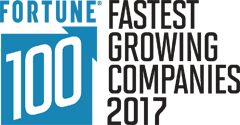Biosimilars: Preparing For The Revolution
In the pharmaceutical industry, necessity is the mother of invention. Faced with the impending loss of exclusivity of several biologics currently on the market, biosimilars have emerged as a cost-saving alternative.
But the road to market has been a bumpy one. Innovation goes hand-in-hand with significant R&D costs and competition. The complexity and cost of production, regulatory drag, and push-back from companies with biologics on the market through legal challenges and aggressive marketing of the original biologics have all been contributing factors slowing their arrival.
But make no mistake, biosimilars are coming.

A Trend Not to be Ignored
Significant growth in the biosimilars market is expected with the global market size expected to reach $2 billion by 2018. New legislation on biosimilars is being adopted around the world, and while there are currently only 2 agents approved in the US, more than 20 are approved in Europe. Development is accelerating, and according to some estimates the pipeline is evaluated at 56 biosimilar products, with 30 companies with active programs, and estimated cost savings for health systems in the US and Europe of up to $110 billion through 2020.
Despite the cost-saving potential and promise of greater access, there are still challenges ahead including interchangeability, legal disputes, competition, endorsement from insurance providers, and limited physician and patient awareness.
Different stakeholders have distinct perspectives on biosimilars and their use, and the biosimilars landscape will be shaped by the interplay between these players, each of whom have their own stakes in the market, and their own challenges to face.
Biosimilar Developers
- Stakes: These companies are venturing in a new market with attractive revenue potential but also associated with risk.
- Challenges: They need to achieve short-term and long-term viability of their biosimilar products through the establishment of a strategic R&D program, and competitive market position and growth. This includes controlling the cost and time of development, investing in products with the most potential (i.e. choosing the industry leader as a reference product), legislative and regulatory advocacy via trade-groups, finding strategies to challenge the established reputation of the reference product and patient and physician education.
Biologics Companies (Patent Holding)
- Stakes:These companies face the loss of exclusivity of their patent-holding biologics. The long-standing clinical and market history of their biological products will be challenged by competing biosimilars.
- Challenges:They need to devise strategies to protect their brand from the growing competition. This involves legislative and regulatory advocacy, using technological advancements to improve their product, using marketing to counter the rise of biosimilars and patient and physician education.
Governments/Policy Makers
- Stakes: The role of these regulatory bodies is to provide access to care and improve the health of their population, but also foster economic growth.
- They need to establish regulations to protect the public, and support business development and sustainability. This involves consulting with various stakeholders (i.e. pharmaceutical companies, insurance providers, physicians and patients) and developing legislation and industry guidelines that regulate the development, approval and accessibility of biosimilars.
Insurance Providers
- Stakes: These entities must prepare for the consequences of the expansion of the biologics/biosimilars market.
- Challenges: They need to determine which biosimilars will be added to their formulary, under which category they will be filed and how they will be reimbursed. This involves legislative and regulatory advocacy, negotiating prices with manufacturers and patient and physician education.
Physicians and Patients
- Stakes: Their priority is the health and benefit of the patient.
- Challenges: They need to navigate the established biologics market and the emerging biosimilar market to select medication that meets the treatment objectives of both the physician and patient. This involves balancing the clinical value and cost of the various treatment options and requires an understanding of the difference and similarities as well as advantages and caveats of biologics and biosimilars.
In order to adapt and effect change in a rapidly evolving market, stakeholders need to have a comprehensive understanding of the biosimilars landscape, including knowledge of the regulation regulations, R&D methods, and available products. With diverging interests at play, companies that harness knowledge through workforce training and customer education stand to successfully secure and strengthen their position in the biosimilar market and stay above the fold.
For over 25 years, Ebix Life Sciences has provided customized education and sales training programs to hundreds of businesses in the healthcare and medical industry. If you’re interested in discussing a new training project, feel free to contact our team directly at lifesciences@ebix.com. From there, we can set up an individual consultation to help better understand your needs and how we can exceed them.
Jennifer Imerini has over 20 years of experience working in the healthcare industry. She has expertise in understanding and developing teams, processes, and infrastructure for marketing, sales training and physician education departments within major pharmaceutical, biotech and medical device companies.
EbixMarketing


